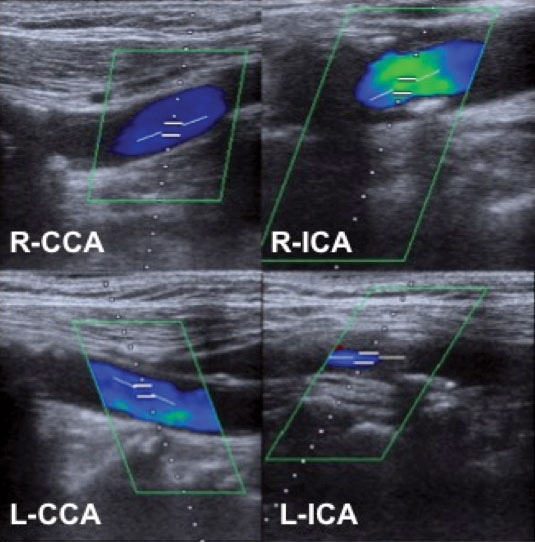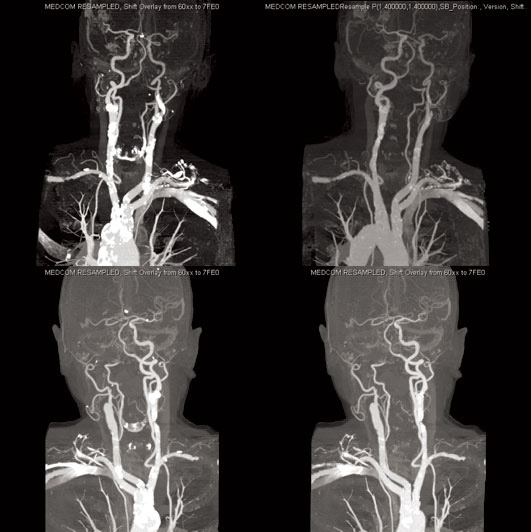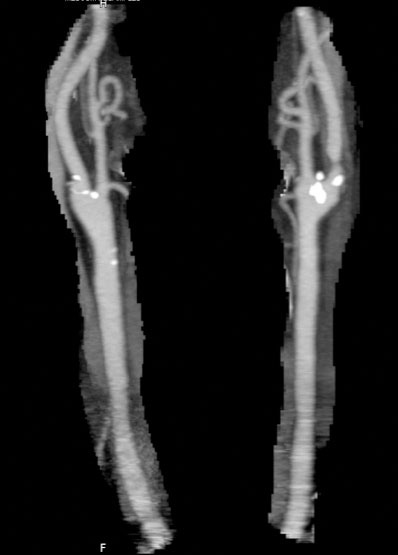Epidemiology and natural history of stroke
Stroke is a significant cause of mortality and morbidity with the worldwide incidence of new strokes being approximately 16 million per year, resulting in approximately 5.7 million deaths.1 Within the UK it is the third largest cause of death, accounting for 11% of all deaths in England, and is the single largest cause of disability in England.2 This equates to stroke consuming approximately 5% of the total NHS costs, with treatment of, and productivity loss arising from stroke totalling societal costs of £8.9 billion per year.3 It is well documented that ischaemic etiology is the cause of 90% of strokes, and of these carotid atherosclerosis is responsible for approximately 15%.4 Indeed, carotid atherosclerosis has been found to result in an increased risk of short term stroke reoccurrence and an increase in long term morbidity.5
Medical therapy
Secondary prevention is the rationale of treating carotid atherosclerosis. Firstly the medical treatment concentrates on modifying the risk factors associated with ischaemic stroke and thromboembolic disease, such as hypertension, diabetes mellitus, heavy alcohol consumption, smoking and hypercholesterolaemia.6-9 In addition several randomised controlled trials have shown reduction in the risk of stroke in patients on platelet anti-aggregate therapy (i.e. aspirin, dipyridamole, clopidogrel or ticlodipine), which has become the mainstay of the medical treatment of carotid atherosclerosis.10 There are no data demonstrating the superiority of combined agents (i.e. aspirin + clopidogrel).
Surgical therapy
Since C Miller Fisher described the relationship between carotid artery disease and stroke in 1951,11 the use of carotid endarterectomy has increased exponentially. Many good quality randomised trials have been conducted on the topic, offering clinicians the opportunity to make evidence based clinical decisions.
Management in Symptomatic patients
In the 1990s two large-scale randomised clinical trials were conducted, in order to establish whether the surgical treatment was superior to the best medical treatment in symptomatic carotid stenosis. One of them was carried out in North America (NASCET) and the other one in Europe (ECST). Both trials demonstrated the efficacy of carotid endarterectomy over best medical treatment in selected patients with TIA or non-disabling stroke, within the previous six months.
The North American Symptomatic Carotid Endarterectomy Trial (NASCET)12 was reported in 1991. The patients included were younger than 80 years old, had symptoms within four months of enrolment into the trial and had carotid stenosis diagnosed with catheter angiography. All patients (659) received best medical treatment (high dose aspirin and risk factors modification), and those randomised to surgical treatment (328) also had carotid endarterectomy. The trial was stopped earlier than planned after an interim analysis clearly showed a significant benefit of surgical treatment for high-grade stenosis (70 to 99%) over medical treatment, with an absolute risk reduction of 17% (±3.5%) and 12.7% when the complication rate was also considered.

The European Carotid Surgery trial (ESCT),13 was reported in 1998 and reported similar results to the NASCET trial with an absolute risk reduction of 11.6%.
The main controversy of the above-cited trials is the way the two groups measured the degree of stenosis: NASCET – diameter at greatest narrowing/diameter beyond the carotid bulb; ECST – diameter at greatest narrowing/estimated probable original diameter. These differences create obvious problems in comparing the results from the two studies.

Management in Asymptomatic patients
The role of carotid endarterectomy in asymptomatic carotid stenosis is more contentious than that of symptomatic stenosis. This is because the natural history of asymptomatic stenosis is more varied. Asymptomatic stenosis is often found as an incident finding. The risk of having a stroke from asymptomatic carotid stenosis is dependent on the severity of stenosis and the rates are;14
Degree of stenosis <50% 50-80% >80%
Annual risk stroke <1% 0.8-2.4% 1-5%
There have been several randomised clinical trials comparing best medical treatment with CEA. The Asymptomatic Carotid Atherosclerosis Study (ACAS) and the Veterans Affairs Cooperative Study (VACS) compared outcomes of management with CEA and aspirin with only aspirin.
The later trial15 involved only male patients with 50% stenosis or greater on angiography and showed that the incidence of ipsilateral neurological events in the four years of follow up was 8.0% in the CEA group compared with 20.6% in the medical group. The incidence of ipsilateral stroke was 4.7% in the CEA group compared with 9.4% in the medical group. However, taking into account the perioperative risk of death of 1.9%, the difference in death or stroke outcomes between the two groups was not statistically significant. Most of the mortality was due to coronary atherosclerosis.
The ACAS16 involved male and female patients with a mean age of 67 and carotid artery stenosis of 60% or greater. From their results, they estimated the five-year risk of ipsilateral stroke, perioperative stroke or death was 5.1% following CEA compared with 11.0% following medical management. This equated to an average 53% lower five-year risk of ipsilateral stroke in the surgical arm versus the medical arm. This average was quantified into a 66% reduced risk for men and a 16% reduced risk for women. There was no statistical benefit seen when the five-year risk of major strokes and mortality were analysed.
The Asymptomatic Carotid Surgery Trial (ACST)17 involved randomising male and female patients with 70% or greater stenosis on duplex USS into surgical and best medical treatment arms. The five-year stroke risk of surgery versus medical management was 6.4% versus 11.8% (P<0.0001) respectively, with mortality and disabling stroke rates being 3.5% versus 6.1% for both sexes. A caveat to these findings was that there was no statistical benefit for patients aged 75 or over. Ten-year follow-up of this trial18 echoed the original findings of reduced stroke rates for those whom had CEA. At ten years the reported stroke risk in the CEA arm was 13.4% compared with 17.9% in the medical arm.
Carotid Endarterectomy versus Carotid Angioplasty
Since the early 1990’s endovascular management of carotid stenosis has become an important alternative to CEA and, despite an early trial producing data to the contrary, there are now several randomised controlled trials that support its use. As such, the National Institute of Clinical Excellence supports its use for both symptomatic and asymptomatic patients (http://www.nice.org.uk). The initial concerns of carotid angioplasty and stenting (CAS) were of the immediate risk of thrombo-embolic risks, and the long-term risk of re-stenosis. An initial study19 into carotid angioplasty involved only 23 patients with severe carotid stenosis of 70% or greater. The ten patients who were randomised into the CEA arm had no complications. Unfortunately, five out of seven of the carotid angioplasty patients had strokes (P=0.0034), three of which had disability at 30 days. The trial was stopped at 17 patients.

CAVITAS20 was published in 2001 and randomised 504 patients in a multicentre trial; 251 had endovascular treatment (26% stenting, 74% angioplasty) and 253 had CEA. The major outcomes at 30 days (disabling stroke or death) were not statistically different. However, relatively minor morbidity such as transient cranial neuropathy, was higher in the CEA arm (8.7% compared with 0% p<0.0001). This study also found that at one-year follow-up the CAS group had a much higher rate of severe ipsilateral carotid artery stenosis (70-99%) compared with CEA, 14% vs 4% respectively. Despite this finding, at three years, there was no substantial difference in the rate of ipsilateral stroke between the groups (adjusted hazard ratio=1.04, (95% CI 0.63-1.70, p<0.9). The higher rate of stenosis but non-significantly increased risk of ipsilateral stroke has been echoed in long-term follow-up of patients involved in the original study.21
Following this trial, the SAPPHIRE group carried out a RCT hypothesising that carotid stenting with the use of an emboli protection device was not inferior to CEA.22 They enrolled 334 high-risk patients with either symptomatic stenosis with 50% or greater occlusion, and asymptomatic patients with 80% or greater occlusion. They found that the 30-day MI, stroke rate or mortality rate with CEA and CAS were 9.8% and 4.8% (P=0.9) respectively. At one year they showed morbidity and mortality rates in the CEA and CAS groups of 20.1% and 12.2% respectively. It was concluded that carotid stenting with emboli-protection device was not inferior to CEA. Four year follow up showed that there was no statistical difference in long-term outcomes.23 The subsequent SPACE trial investigated inferiority of CAS versus CEA in non-high risk patients with symptomatic carotid artery stenosis with 70% or greater occlusion.24 They showed that the 30 day risk of ipsilateral stroke or mortality were equivalent between treatment modalities (6.3% CEA vs 6.8% CAS). However, statistical analysis showed the study to be underpowered due to its small size so the hypothesis could not be accepted nor refuted. Despite this, it was reported that the CAS group had a higher risk of severe carotid stenosis at two years (10.7 % vs 4.6%, P=0.0009).25
Contrary to the previous trials, the EVA – 3S multicentre RCT showed a higher risk of stroke or mortality at 30 days and at six months following CAS compared with CEA.26 They randomised patients with symptomatic stenosis of 60% or more. Their findings showed a risk of any stroke or mortality at 30 days to be 3.9% and 9.6% in the CEA and CAS groups respectively, and 6.1% and 11.7% at six months. The relatively low rate of complications in the CEA arm and high complication rate in the CAS arm were thought to be due to the fact that in the CAS arm no embolic protection was used and the physicians were relatively inexperienced compared with the surgeons carrying out the CEAs. Consistent with other trials, cranial nerve injury was more common after CEA than CAS.
The Carotid Revascularisation Endarterectomy versus Stenting Trial (CREST) was published in 2010 and has provided more robust data.27 This multicentre RCT recruited 2502 patients with a mean follow-up of 2.5 years. It involved symptomatic patients with carotid stenosis of 50% or greater on angiography and asymptomatic patients with stenosis of 60% or greater on angiography (or higher percentage of occlusion if other imaging modalities were used). The primary endpoint was the occurrence of any stroke, MI, or death during the peri-procedural period, or ipsilateral stroke in the following four-year follow-up period. The trial reported that there was no significant difference in primary endpoint with either CAS or CEA (7.2% vs. 6.8%; HR=1.11;95 CI, 0.81-1.51;P=0.51). Despite no difference in primary endpoints, there were significant differences in the type of complications seen. CEA had a higher risk of MI in the perioperative period (2.3% vs. 1.1%, P=0.032), whilst the risk of stroke was greater in the CAS patients (4.1% vs. 2.3%, P=0.012). There were no differences in outcomes of asymptomatic patients and symptomatic patients, nor was there a sex bias. The results did suggest that outcomes were improved by CAS for patients less than 70 years and improved by CEA for patients older than 70 years. Once again, there were fewer cranial nerve palsies with CAS than with CEA (0.3% vs. 4.7%).
The early trials show that CEA is superior to CAS with regards to peri-procedural risk of stroke and mortality, but may have increased risk of MI. This is confirmed by many metanalyses including the most recent.28 However, with careful patient selection and continued improvements in the endovascular arena, the inferiority of CAS may change. We await further trial data from the International Carotid Stenting Study, SPACE 2 and ACST-2 trials. The interim data of the former seems to show that CEA is associated with reduced risk of peri-procedural stroke, MI and death but increased risk of cranial nerve damage, however completion of the study is necessary for the final statistical comparisons.29
Conclusion
In UK, the National Institute for Health and Clinical Excellence (NICE clinical guideline 68 – Stroke 13 – 2008) divides the symptomatic population (stable neurological symptoms from acute non-disabling stroke or TIA) in two subgroups: carotid stenosis of 50–99% (NASCET criteria), or 70–99% (ECST criteria); carotid stenosis of less than 50% (NASCET criteria), or less than 70% (ECST criteria). The first group, according to NICE, should be assessed and referred for carotid endarterectomy within one week of onset of stroke or TIA symptoms, undergo surgery within a maximum of two weeks of onset of stroke or TIA symptoms and receive best medical treatment. The second group, with less severe stenosis should not undergo surgery, but only receive best medical treatment.
In the asymptomatic group the above mentioned trials show that in patients who are less than 75 years, with a carotid artery stenosis exceeding 60%, the long-term outcome is better with CEA and medical management than with medical management alone, provided the patient has a low surgical risk. A recent trial looking into CEA versus carotid angioplasty and stenting30 in both symptomatic and asymptomatic patients showed no significant difference in the occurrence of total numbers of stroke, MI or death in four-year follow-up. This was broken down into reduced numbers of stroke following CEA, but reduced incidence of MI following endovascular intervention. This may therefore be the avenue for the asymptomatic high-risk patient in the future. Two further trials are ongoing investigating CEA vs endovascular treatment in asymptomatic patients.
References
- Di Carlo A. Human and economic burden of stroke. Age Ageing, 2009;38(1):4-5.
- Reducing Brain Damage: Faster access to better stroke care. National Audit Office, London, 2005.
- Saka O, McGuire A, Wolfe C. Cost of stroke in the United Kingdom. Age Ageing, 2009;38(1):27-32.
- Petty GW, et al. Ischemic stroke subtypes: a population-based study of incidence and risk factors. Stroke, 1999;30(12):2513-6.
- Petty GW, et al. Ischemic stroke subtypes : a population-based study of functional outcome, survival, and recurrence. Stroke, 2000;31(5):1062-8.
- Gorelick PB, et al. Prevention of a first stroke: a review of guidelines and a multidisciplinary consensus statement from the National Stroke Association. JAMA, 1999;281(12):1112-20.
- Gill JS, et al. Stroke and alcohol consumption. N Engl J Med, 1986;315(17):1041-6.
- Shinton R. and Beevers G. Meta-analysis of relation between cigarette smoking and stroke. BMJ, 1989;298(6676):789-94.
- Atkins D, et al. Cholesterol reduction and the risk for stroke in men. A meta-analysis of randomized, controlled trials. Ann Intern Med, 1993;119(2):136-45.
- Collaborative overview of randomised trials of antiplatelet therapy–I: Prevention of death, myocardial infarction, and stroke by prolonged antiplatelet therapy in various categories of patients. Antiplatelet Trialists’ Collaboration. BMJ, 1994;308(6921):81-106.
- Fisher M. Occlusion of the internal carotid artery. AMA Arch Neurol Psychiatry, 1951;65(3):346-77.
- North American Symptomatic Carotid Endarterectomy Trial. Methods, patient characteristics, and progress. Stroke, 1991;22(6):711-20.
- Randomised trial of endarterectomy for recently symptomatic carotid stenosis: final results of the MRC European Carotid Surgery Trial (ECST). Lancet, 1998;351(9113):1379-87.
- Rijbroek A, et al. Asymptomatic carotid artery stenosis: past, present and future. How to improve patient selection? Eur Neurol, 2006;56(3):139-54.
- Hobson RW, 2nd, et al. Efficacy of carotid endarterectomy for asymptomatic carotid stenosis. The Veterans Affairs Cooperative Study Group. N Engl J Med, 1993;328(4):221-7.
- Young B, et al. An analysis of perioperative surgical mortality and morbidity in the asymptomatic carotid atherosclerosis study. ACAS Investigators. Asymptomatic Carotid Atherosclerosis Study. Stroke, 1996;27(12):2216-24.
- Halliday A, et al. Prevention of disabling and fatal strokes by successful carotid endarterectomy in patients without recent neurological symptoms: randomised controlled trial. Lancet, 2004;363(9420):1491-502.
- Halliday A, et al. 10-year stroke prevention after successful carotid endarterectomy for asymptomatic stenosis (ACST-1): a multicentre randomised trial. Lancet, 2010;376(9746):1074-84.
- Naylor AR, et al. Randomized study of carotid angioplasty and stenting versus carotid endarterectomy: a stopped trial. J Vasc Surg, 1998;28(2):326-34.
- Endovascular versus surgical treatment in patients with carotid stenosis in the Carotid and Vertebral Artery Transluminal Angioplasty Study (CAVATAS): a randomised trial. Lancet, 2001;357(9270):1729-37.
- Bonati LH. et al. Long-term risk of carotid restenosis in patients randomly assigned to endovascular treatment or endarterectomy in the Carotid and Vertebral Artery Transluminal Angioplasty Study (CAVATAS): long-term follow-up of a randomised trial. Lancet Neurol, 2009;8(10):908-17.
- Yadav JS, et al. Protected carotid-artery stenting versus endarterectomy in high-risk patients. N Engl J Med, 2004;351(15):1493-501.
- Gurm HS, et al. Long-term results of carotid stenting versus endarterectomy in high-risk patients. N Engl J Med 2008;358(15):1572-9.
- Ringleb PA, et al. 30 day results from the SPACE trial of stent-protected angioplasty versus carotid endarterectomy in symptomatic patients: a randomised non-inferiority trial. Lancet, 2006;368(9543):1239-47.
- Eckstein HH, et al. Results of the Stent-Protected Angioplasty versus Carotid Endarterectomy (SPACE) study to treat symptomatic stenoses at 2 years: a multinational, prospective, randomised trial. Lancet Neurol, 2008;7(10):893-902.
- Andziak P. [Commentary to the articles: SPACE Collaborative Group. 30 day results from the SPACE trial of stent-protected angioplasty versus carotid endarterectomy in symptomatic patients: a randomised non-inferiority trial. Lancet 2006;368:1239-47. Mas JL, Chatellier G, Beyssen B, et al. EVA-3S Investigators. Endarterectomy versus stenting in patients with symptomatic severe carotid stenosis. N Engl J Med. 2006;355:1660-71]. Kardiol Pol, 2006;64(12):1458-60; discussion 1460-1.
- Mantese VA, et al. The Carotid Revascularization Endarterectomy versus Stenting Trial (CREST): stenting versus carotid endarterectomy for carotid disease. Stroke, 2010;41(10 Suppl):S31-4.
- Liu ZJ, et al. Updated systematic review and meta-analysis of randomized clinical trials comparing carotid artery stenting and carotid endarterectomy in the treatment of carotid stenosis. Ann Vasc Surg, 2012;26(4):576-90.
- Ederle J, et al. Carotid artery stenting compared with endarterectomy in patients with symptomatic carotid stenosis (International Carotid Stenting Study): an interim analysis of a randomised controlled trial. Lancet, 2010;375(9719):985-97.
- Brott TG, et al. Stenting versus endarterectomy for treatment of carotid-artery stenosis. N Engl J Med, 2010;363(1):11-23.


